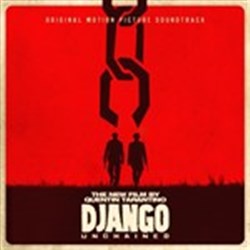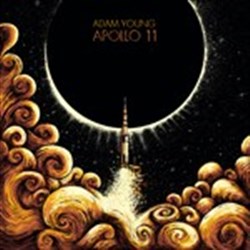
BY ALTUĞ KARAKURT (EE/III)
altug.karakurt@ug.bilkent.edu.tr
Soundtracks and movie scores have always been a hot topic for the music community. The harmony and collaboration of audio and visual content form a very expressive medium for artists and a very fascinating experience for audiences. This area is fertile ground for diverse artistic styles due to the aforementioned expressiveness of the medium. However, I think that most soundtracks and film scores are becoming more and more alike. I’m nowhere near an expert in this field, but according to my observations, the mainstream of the soundtrack scene is dominated by orchestral works, if we leave aside the cheap and cheesy R&B and country/folk tracks composed for disposable romantic comedies and youth films. What I want to discuss today is soundtracks that do have artistic quality on their own and can be enjoyed without the accompanying visuals.
Orchestral music would be the first choice for creating grandiose, epic soundscapes, which I think is what makes it a very common choice. In other words, it isn’t surprising that orchestral pieces predominate among soundtracks, but I wish other genres weren’t so rare. This week I want to introduce you to soundtracks that perfectly demonstrates how stylistic diversity and creativity can make a difference.
Django Unchained OST
 “Django Unchained” is a 2012 Western movie by Quentin Tarantino. The film is set in the American South in the 1850s, right before the outbreak of the US Civil War. The plot revolves around Dr. Schultz, a German bounty hunter, and Django, an African-American slave. Throughout the movie, Django and Schultz kill wanted criminals and wreak havoc on Django’s former tormentors as well as other slavery criminals, while at the same time the experiences and memories of an ordinary slave are depicted. The film is pretty much two and a half hours of reckless revenge upon American racism, featuring Tarantino’s magnificent cinematography and unique visualization of violence.
“Django Unchained” is a 2012 Western movie by Quentin Tarantino. The film is set in the American South in the 1850s, right before the outbreak of the US Civil War. The plot revolves around Dr. Schultz, a German bounty hunter, and Django, an African-American slave. Throughout the movie, Django and Schultz kill wanted criminals and wreak havoc on Django’s former tormentors as well as other slavery criminals, while at the same time the experiences and memories of an ordinary slave are depicted. The film is pretty much two and a half hours of reckless revenge upon American racism, featuring Tarantino’s magnificent cinematography and unique visualization of violence.
This is one of the very few movies in which the soundtrack really stands out and significantly influences the impact of the work. I think the success of this soundtrack is due to the careful choosing of artists and styles that fit perfectly with the theme, instead of throwing in a bunch of epic orchestral tracks here and there as most movies do. The soundtrack album is composed of 24 tracks, of which 8 are dialogues, 12 are taken from existing works and only 4 are original scores. The existing and original tracks both are in great harmony with the scenes they accompany and clearly show how carefully they were chosen.
The most memorable moment in this respect is the slave transportation scene. Here, the protagonists are disguised as slave merchants and are seen riding through a forest with the antagonist, plantation owner Calvin Candie, and his men as they transport slaves on foot. Right after tension breaks out between Django and the racist slave master, the group arrives in an open field and the score “100 Black Coffins” kicks in. The track starts off with whistling and humming resembling that heard in old Western movies, but suddenly switches to very synthetic trap hip-hop-style hi-hats and drum machines as Rick Ross’s Southern-style flow transforms the track into a very modern trap/gangsta hip-hop tune. I got distracted from the film and started laughing, as it didn’t appear to be a good choice for a Western movie about slavery set in the 1850s. However, as the song progressed, it came to feel like a perfect fit, in a very peculiar way. The synthetic, repetitive drum machine captured the tension, while Ross’s raw, hard-hitting flow went great with the view of Django fearlessly riding with the slave masters.
This harmony is precisely what I was trying to explain earlier. The soundtrack and the movie are based on very different styles, but they are connected in a creative and unusual way. Unique artistic choices like this made the movie feel different from the many spaghetti Western movies of the 70s or the numerous slavery movies from the past decade, most of which are practically the same. Tarantino makes use of the expressiveness of audio and visuals in combination very successfully. I hope many more directors will employ such brave and creative choices as Tarantino does in “Django Unchained.”
Adam Young – Apollo 11: One Giant Leap for Mankind
 Adam Young, who most of us know from his solo project Owl City, has released an imaginary soundtrack for the launch of the Apollo 11 space rocket. Young re-imagined the landing on the moon in July 1969 and composed an original score of 12 tracks for this event. The album shows his talent as a composer and spans a wide spectrum of styles throughout. From the minimal, shining synths that we know from Owl City to typical alternative rock guitar sections to orchestral strings and horns, Young demonstrates a profound and diverse knowledge when it comes to composing.
Adam Young, who most of us know from his solo project Owl City, has released an imaginary soundtrack for the launch of the Apollo 11 space rocket. Young re-imagined the landing on the moon in July 1969 and composed an original score of 12 tracks for this event. The album shows his talent as a composer and spans a wide spectrum of styles throughout. From the minimal, shining synths that we know from Owl City to typical alternative rock guitar sections to orchestral strings and horns, Young demonstrates a profound and diverse knowledge when it comes to composing.
In a post released on his website, Young announced that “Apollo 11” is the first of a series of imaginary soundtracks he will be releasing monthly, as composing for motion pictures is one of the areas he would like to explore. The soundtracks will be accompanied by specially designed album art. “Apollo 11” was released on February 1st, and I’m looking forward to the following releases. The series can be streamed through SoundCloud and Spotify or downloaded from Young’s website for free.
I strongly recommend that you give this magnificent release a listen and take a journey in time and space to one of the greatest historical events of humankind.
